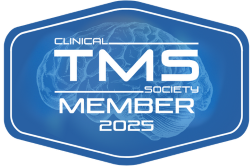
Mental health care is evolving, with new technologies making it possible to diagnose and treat conditions like depression, anxiety, and attention deficit hyperactivity disorder (ADHD) with greater precision. One of the most exciting advancements is the Quantitative Electroencephalogram (QEEG)—a non-invasive brain-mapping tool that measures electrical activity to reveal patterns linked to mental health diagnoses.
QEEG creates a detailed map of brain function, showing which areas are overactive or underactive. These insights help clinicians better understand the root causes of symptoms and tailor treatments like transcranial magnetic stimulation (TMS) to match each patient’s needs. Instead of a one-size-fits-all approach, this data-driven, evidence-based method ensures that interventions are based on objective brain activity patterns, leading to more effective outcomes.
Personalized treatment plans—built on individual characteristics and broader trends seen in clinical research—help maximize success, improving patient care in ways that were not possible before.
What is QEEG?
QEEG is an advanced form of electroencephalography (EEG) that captures and analyzes brain activity using sophisticated mathematical algorithms. Unlike standard EEG, which records electrical activity to detect abnormalities, QEEG processes this data digitally, transforming it into a comprehensive brain map that reveals patterns associated with mental health conditions.
This FDA-approved technique allows for a deeper examination of brain function, including frequency band analysis, signal complexity, and connectivity between different brain regions. It evaluates how various areas of the brain communicate and function together and provides valuable insight into diagnoses such as depression, anxiety, ADHD, autism spectrum disorder, learning disability, traumatic brain injury, stroke, dementia, and epilepsy.
QEEG does not serve as a standalone diagnostic tool. But it complements clinical assessments by giving objective data that supports a more accurate diagnosis. When used alongside other evaluations, QEEG helps determine disease severity, treatment response, and personalized intervention strategies, making it an essential component in modern mental health care.

The American Association of Neurology recommends QEEG as a cognitive test for diagnosing learning disorders. It may also help investigate and treat ADHD. In a study, adults and children with ADHD show increased power in brainwave bands theta and delta, while adolescents have reduced beta power compared to a control group.
The Science of QEEG
The brain consists of billions of nerve cells (neurons) that communicate through electrical impulses. These signals create rhythmic patterns called brainwaves, which are detected by electrodes placed on the scalp. During a QEEG session, a patient wears multiple electrodes or sensors that record these electrical signals under different conditions, such as sitting still with eyes closed or focusing on a specific task. The collected data is processed through complex mathematical algorithms, transforming raw EEG recordings into a color-coded brain map.
This brain mapping technique allows clinicians to identify areas where brain activity deviates from expected patterns. Some regions may be overactive, generating excessive high-frequency brainwaves, while others may be underactive, leading to sluggish processing. These patterns give clinicians valuable insights into the brain’s functional state and help them pinpoint potential imbalances associated with conditions such as depression, anxiety, ADHD, post-concussion syndrome, mild traumatic brain injury, and cognitive impairments.
Brainwaves and Their Role in Mental Health
Brainwaves are categorized into five primary frequency bands, each playing a unique role in cognitive function, mood regulation, and mental performance:
- Delta Waves (0.5 – 4 Hz): The slowest brainwaves, associated with deep sleep and unconscious processes.
- Theta Waves (4 – 8 Hz): Linked to deep relaxation, creativity, and memory processing.
- Alpha Waves (8 – 12 Hz): The bridge between conscious thought and relaxation, regulating calmness, alertness, and mental coordination.
- Beta Waves (12 – 30 Hz): Associated with active thinking, problem-solving, and alertness.
- Gamma Waves (30 – 100 Hz): The fastest brainwaves, responsible for high-level cognitive functioning, learning, and information processing.
QEEG helps clinicians detect irregularities and guide treatment strategies accordingly.
Identifying Overactive and Underactive Brain Regions
QEEG offers a functional roadmap of how different brain regions communicate and operate. Diagnoses such as depression, ADHD, and anxiety often present with specific neurological markers:
- Depression: Often linked to underactivity in the left prefrontal cortex, where reduced beta wave production may contribute to low mood and lack of motivation.
- Anxiety disorders: Frequently show overactivity in the right frontal lobe with excessive beta waves, leading to heightened worry and stress.
- ADHD: Characterized by increased theta waves and low beta activity, making it challenging to maintain focus and regulate impulses.
- Post-concussion syndrome & mild traumatic brain injury: May involve disrupted connectivity between brain regions, impacting cognitive function, memory, and emotional regulation.
Benefits of QEEG
The validity and reliability of the QEEG methodology have been well-established in peer-reviewed publications.

1. Objective, Data-Driven Insights
Traditional evaluations of mental health diagnoses often rely on observations, questionnaires, and patient self-reporting. QEEG adds a measurable dimension, allowing clinicians to see and quantify brain activity rather than inferring it. This objectivity leads to a more accurate understanding of which brain regions need attention, paving the way for evidence-based interventions.
2. Personalized Treatment Plans
Not all brains react the same way to standardized treatments. QEEG captures each patient’s unique neurological profile, helping clinicians tailor therapies like TMS, medication regimens, or specialized psychotherapeutic approaches. A custom-fit plan based on accurate data often translates to faster, more sustainable results.
3. Enhanced Diagnostic Clarity
Symptoms like inattention, low mood, or agitation can arise from different underlying causes. QEEG helps differentiate these root issues by mapping overactive or underactive brain areas. As an example, the American Association of Neuropsychiatry endorses QEEG as a supplemental tool for classifying unipolar versus bipolar depression and distinguishing depression from healthy subjects, dementia, schizophrenia, and alcoholism. This clarity is also useful in complex cases—like co-occurring conditions like ADHD and anxiety—where pinpointing the central source of symptoms can guide more effective treatments.
4. Tracking Progress Over Time
One of QEEG’s most valuable features is its ability to monitor treatment response. Follow-up brain maps show whether interventions are correcting irregularities in brain activity, making it easier for clinicians to adjust treatment plans if needed. This iterative feedback loop allows for ongoing optimization of therapeutic strategies, ensuring care remains proactive and precise.
5. Versatile Application
Although QEEG is widely recognized in the mental health field for diagnoses like depression, anxiety, and ADHD, it can also provide insights into traumatic brain injury, post-concussion syndrome, learning disabilities and more. This versatility makes QEEG a powerful assessment tool for neurological and psychiatric conditions, supporting an integrated approach to patient care.
QEEG at Relief Mental Health
When needed, Relief Mental Health integrates QEEG into a treatment plan prior to TMS therapy, creating a truly personalized approach to treating depression and other mental health issues. If you’re ready to explore a more customized path toward mental wellness, our team at Relief Mental Health is here to help.
Reach out today to learn how QEEG-guided TMS and our other specialized services can support your journey to better health. Our goal is to offer you the care and resources you need to feel like yourself again—stronger, healthier, and empowered. Let’s take this step together.

